
Vincent van Gogh Painting Reproductions 1 of 18
1853-1890
Dutch Post-Impressionist Painter
Vincent Willem van Gogh was born on 30 March 1853 in Groot-Zundert, a quiet village in North Brabant, the Netherlands, into a household that combined modest clerical income with cultural aspiration. His father served as a minister of the Dutch Reformed Church; his mother, from a prosperous Hague family, encouraged drawing as a form of discipline and expression. Childhood recollections he later described as “austere and cold” were marked by boarding schools that felt punitive, early signs of melancholia, and a withdrawal into books and sketching. That severity of upbringing - piety coupled with restraint - crystallised into an adult temperament that sought absolutes, whether in faith, charity, or art.
After uncle Cent secured him a position at Goupil & Cie in 1869, the young Van Gogh learned the mechanics of art as commodity. London followed, then Paris - capitals of opportunity that revealed both the brisk traffic of pictures and the spiritual vacuum he increasingly perceived behind them. Unrequited love for a landlady’s daughter in London pushed him further inward. By 1876 he had left the firm and embarked on a restless search for purpose through teaching, preaching, and translation of scripture. Failures at formal theological examinations and mission training deepened his conviction that sincerity mattered more than institution. That conviction cost him his post in the Borinage when, as a missionary, he identified more with the miners than with ecclesiastical decorum.
The Borinage years proved decisive. Living among coal miners, he surrendered comfort to align himself with the poor, sleeping on straw and sharing his food. Church authorities saw in this not humility but unseemly zeal, and dismissed him. Rejected by the church, he turned to drawing with an ardour that was in part devotional. Theo, the younger brother who would become his financial and emotional anchor, urged him to study art seriously. In Brussels in 1880, anatomy lessons and perspective drills provided the grammar he had lacked, though formal instruction never wholly suited his temperament. Van Gogh preferred the stubborn scrutiny of real bodies and real labour to academic plaster casts.
Back with his parents in Etten and later The Hague, he practised incessantly. The Hague period brought personal entanglement with Clasina (Sien) Hoornik, a pregnant, impecunious woman whose presence scandalised his family and offended his mentor Anton Mauve. Van Gogh’s loyalty to Sien was practical as much as romantic - a resistance to bourgeois morality and a determination to hold to his own code. Illness, poverty and tension eroded the arrangement; by late 1883 he left her and their fragile domesticity behind, a decision that left its own scar of guilt.
Settling in Nuenen with his parents toward the end of 1883, he immersed himself in depictions of peasant life. The Potato Eaters of 1885, with its earthy palette and coarse physiognomies, attempted honesty over prettification. Theo found the work too sombre for Parisian taste, a critique that wounded but did not surprise Vincent. The parsonage garden, the weavers’ cottages, and the repeated studies of working hands and tired faces reveal a man forging a moral vision through paint. His father’s death in March 1885 closed a chapter of filial conflict; the ensuing months saw a surge of still lifes and experiments in composition that hinted at the chromatic daring to come.
Antwerp introduced him to Rubens’s flesh tones and the bright pigments available in modern shops. Japanese woodcuts, bought for a few francs in the port districts, became talismans of flattened space and clear contour. Yet his health deteriorated under the strain of poor diet and heavy smoking. By early 1886, he had fled the rigid demands of the Antwerp academy for Paris, where Theo shared lodgings and provided access to the avant-garde milieu Vincent both craved and resisted.
Paris sharpened his eye and accelerated his pace. He painted more than 200 canvases in two years, absorbing Pointillist theories from Seurat and Signac, and gleaning intensity of colour from Monticelli’s impasto. Friendships - Émile Bernard, Henri de Toulouse-Lautrec, Paul Gauguin - offered an intellectual camaraderie that was never entirely stable. Van Gogh swung between admiration and argument, between isolation and a longing for collective work. His palette lightened, his brushstroke loosened, yet his gaze remained fixed on essential character rather than transient fashion.
In February 1888 he left for Arles, seeking southern light and a studio of mutual support. The Yellow House became both an experiment and a symbol - a place to gather like-minded artists. There he completed the Sunflowers, The Night Café, Bedroom in Arles, and a series of landscapes and portraits that registered how colour could carry psychological weight. “Colour expresses something in itself,” he insisted, and in Arles he tested that credo daily. Yellow suggested truth and vitality; viridian greens and blood reds could as easily imply moral unease.
Gauguin’s arrival in October 1888 was welcome and fraught. The two men debated aesthetics, technique, and the role of memory in painting. Gauguin advocated working from imagination; Van Gogh, from sensation transmuted by moral feeling. The atmosphere grew tense - two strong wills, uneven finances, fragile egos. On 23 December, after a quarrel whose exact contours remain murky, Van Gogh mutilated his left ear. Whether a gesture of self-punishment, a psychotic rupture, or a desperate plea for attention, it signalled the intractable nature of his mental suffering.
Hospitalised in Arles, then self-committed to the asylum at Saint-Rémy in May 1889, he oscillated between clarity and episodes of hallucination. The asylum’s barred cell became a studio, the courtyard his garden motif. Here he produced The Starry Night, the Olive Trees, and transpositions of Millet’s sowers and reapers - acts of homage and transformation that fused rural symbolism with a restless, swirling paint surface. He wrote that sometimes “the veil of time and fatality of circumstances seemed to be torn apart for an instant”, a sentence that suggests the precariousness of his lucidity and the intensity of his vision when it returned.
By May 1890 he moved to Auvers-sur-Oise, near Paris, under the care of Dr Paul Gachet, himself an amateur painter with a melancholic disposition Vincent immediately recognised. In roughly seventy feverish days he painted as many canvases: churches under unstable skies, thatched cottages, wheat fields cut by dark birds or roads that seem to end abruptly. These were not so much landscapes as states of mind given form - vast plains saturated with loneliness, but also with a stubborn pulse of life. On 27 July 1890 he shot himself; infection set in, and he died two days later, Theo at his side. “The sadness will last forever,” he is reported to have said.
Theo, already ill, died six months later. Their widowed sister-in-law, Johanna van Gogh-Bonger, undertook the patient, strategic promotion of Vincent’s work, publishing the letters and placing canvases where they could be seen and understood. Slowly, critics and artists recognised the coherence beneath the turmoil. The Fauves responded to his colour, German Expressionists to his urgency, modern collectors to the rarity of a life so compressed into a decade of furious work. The myth of the “tortured artist” coalesced around him, yet the letters complicate that romance by revealing deliberate craft, theoretical reading, and persistence as notable as any crisis.
His biography shows a man propelled not merely by illness but by ethical conviction - first theological, later aesthetic - about the dignity of labour and the truth of sensation. The letters to Theo form a counterpoint to the paintings: articulate, reflective, sometimes didactic, occasionally despairing. To read them is to find a mind critically engaged with art history, colour theory, and the problem of how to be both modern and sincere. The brevity of his career - barely more than a decade - intensifies the narrative, but it is the sustained correspondence and the disciplined accumulation of studies, series, and thematic returns that anchor his legacy.
A biography that is often reduced to a few sensational incidents actually reveals a layered human story: a child shaped by duty, a young man chastened by failure, an artist who bent colour and line toward an inner necessity. After 1890, the prices of his canvases rose and fell, museums competed, and reputations were made in his wake. Yet the core remains the same: a painter who, in seeking truth in sunflowers, cypresses, and sowers, left behind not just images but a record of looking and feeling that continues to challenge the boundaries between suffering and creation, between the seen world and the felt one.
After uncle Cent secured him a position at Goupil & Cie in 1869, the young Van Gogh learned the mechanics of art as commodity. London followed, then Paris - capitals of opportunity that revealed both the brisk traffic of pictures and the spiritual vacuum he increasingly perceived behind them. Unrequited love for a landlady’s daughter in London pushed him further inward. By 1876 he had left the firm and embarked on a restless search for purpose through teaching, preaching, and translation of scripture. Failures at formal theological examinations and mission training deepened his conviction that sincerity mattered more than institution. That conviction cost him his post in the Borinage when, as a missionary, he identified more with the miners than with ecclesiastical decorum.
The Borinage years proved decisive. Living among coal miners, he surrendered comfort to align himself with the poor, sleeping on straw and sharing his food. Church authorities saw in this not humility but unseemly zeal, and dismissed him. Rejected by the church, he turned to drawing with an ardour that was in part devotional. Theo, the younger brother who would become his financial and emotional anchor, urged him to study art seriously. In Brussels in 1880, anatomy lessons and perspective drills provided the grammar he had lacked, though formal instruction never wholly suited his temperament. Van Gogh preferred the stubborn scrutiny of real bodies and real labour to academic plaster casts.
Back with his parents in Etten and later The Hague, he practised incessantly. The Hague period brought personal entanglement with Clasina (Sien) Hoornik, a pregnant, impecunious woman whose presence scandalised his family and offended his mentor Anton Mauve. Van Gogh’s loyalty to Sien was practical as much as romantic - a resistance to bourgeois morality and a determination to hold to his own code. Illness, poverty and tension eroded the arrangement; by late 1883 he left her and their fragile domesticity behind, a decision that left its own scar of guilt.
Settling in Nuenen with his parents toward the end of 1883, he immersed himself in depictions of peasant life. The Potato Eaters of 1885, with its earthy palette and coarse physiognomies, attempted honesty over prettification. Theo found the work too sombre for Parisian taste, a critique that wounded but did not surprise Vincent. The parsonage garden, the weavers’ cottages, and the repeated studies of working hands and tired faces reveal a man forging a moral vision through paint. His father’s death in March 1885 closed a chapter of filial conflict; the ensuing months saw a surge of still lifes and experiments in composition that hinted at the chromatic daring to come.
Antwerp introduced him to Rubens’s flesh tones and the bright pigments available in modern shops. Japanese woodcuts, bought for a few francs in the port districts, became talismans of flattened space and clear contour. Yet his health deteriorated under the strain of poor diet and heavy smoking. By early 1886, he had fled the rigid demands of the Antwerp academy for Paris, where Theo shared lodgings and provided access to the avant-garde milieu Vincent both craved and resisted.
Paris sharpened his eye and accelerated his pace. He painted more than 200 canvases in two years, absorbing Pointillist theories from Seurat and Signac, and gleaning intensity of colour from Monticelli’s impasto. Friendships - Émile Bernard, Henri de Toulouse-Lautrec, Paul Gauguin - offered an intellectual camaraderie that was never entirely stable. Van Gogh swung between admiration and argument, between isolation and a longing for collective work. His palette lightened, his brushstroke loosened, yet his gaze remained fixed on essential character rather than transient fashion.
In February 1888 he left for Arles, seeking southern light and a studio of mutual support. The Yellow House became both an experiment and a symbol - a place to gather like-minded artists. There he completed the Sunflowers, The Night Café, Bedroom in Arles, and a series of landscapes and portraits that registered how colour could carry psychological weight. “Colour expresses something in itself,” he insisted, and in Arles he tested that credo daily. Yellow suggested truth and vitality; viridian greens and blood reds could as easily imply moral unease.
Gauguin’s arrival in October 1888 was welcome and fraught. The two men debated aesthetics, technique, and the role of memory in painting. Gauguin advocated working from imagination; Van Gogh, from sensation transmuted by moral feeling. The atmosphere grew tense - two strong wills, uneven finances, fragile egos. On 23 December, after a quarrel whose exact contours remain murky, Van Gogh mutilated his left ear. Whether a gesture of self-punishment, a psychotic rupture, or a desperate plea for attention, it signalled the intractable nature of his mental suffering.
Hospitalised in Arles, then self-committed to the asylum at Saint-Rémy in May 1889, he oscillated between clarity and episodes of hallucination. The asylum’s barred cell became a studio, the courtyard his garden motif. Here he produced The Starry Night, the Olive Trees, and transpositions of Millet’s sowers and reapers - acts of homage and transformation that fused rural symbolism with a restless, swirling paint surface. He wrote that sometimes “the veil of time and fatality of circumstances seemed to be torn apart for an instant”, a sentence that suggests the precariousness of his lucidity and the intensity of his vision when it returned.
By May 1890 he moved to Auvers-sur-Oise, near Paris, under the care of Dr Paul Gachet, himself an amateur painter with a melancholic disposition Vincent immediately recognised. In roughly seventy feverish days he painted as many canvases: churches under unstable skies, thatched cottages, wheat fields cut by dark birds or roads that seem to end abruptly. These were not so much landscapes as states of mind given form - vast plains saturated with loneliness, but also with a stubborn pulse of life. On 27 July 1890 he shot himself; infection set in, and he died two days later, Theo at his side. “The sadness will last forever,” he is reported to have said.
Theo, already ill, died six months later. Their widowed sister-in-law, Johanna van Gogh-Bonger, undertook the patient, strategic promotion of Vincent’s work, publishing the letters and placing canvases where they could be seen and understood. Slowly, critics and artists recognised the coherence beneath the turmoil. The Fauves responded to his colour, German Expressionists to his urgency, modern collectors to the rarity of a life so compressed into a decade of furious work. The myth of the “tortured artist” coalesced around him, yet the letters complicate that romance by revealing deliberate craft, theoretical reading, and persistence as notable as any crisis.
His biography shows a man propelled not merely by illness but by ethical conviction - first theological, later aesthetic - about the dignity of labour and the truth of sensation. The letters to Theo form a counterpoint to the paintings: articulate, reflective, sometimes didactic, occasionally despairing. To read them is to find a mind critically engaged with art history, colour theory, and the problem of how to be both modern and sincere. The brevity of his career - barely more than a decade - intensifies the narrative, but it is the sustained correspondence and the disciplined accumulation of studies, series, and thematic returns that anchor his legacy.
A biography that is often reduced to a few sensational incidents actually reveals a layered human story: a child shaped by duty, a young man chastened by failure, an artist who bent colour and line toward an inner necessity. After 1890, the prices of his canvases rose and fell, museums competed, and reputations were made in his wake. Yet the core remains the same: a painter who, in seeking truth in sunflowers, cypresses, and sowers, left behind not just images but a record of looking and feeling that continues to challenge the boundaries between suffering and creation, between the seen world and the felt one.
416 Vincent van Gogh Paintings
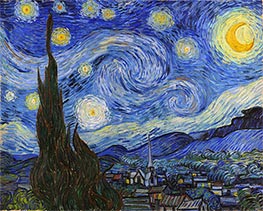
Starry Night 1889
Oil Painting
$974
$974
Canvas Print
$74.46
$74.46
SKU: VVG-1101
Vincent van Gogh
Original Size: 73.7 x 92.1 cm
Museum of Modern Art, New York, USA
Vincent van Gogh
Original Size: 73.7 x 92.1 cm
Museum of Modern Art, New York, USA
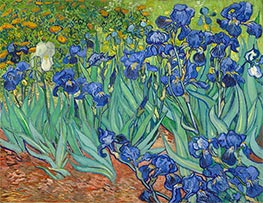
Irises 1889
Oil Painting
$1305
$1305
Canvas Print
$71.07
$71.07
SKU: VVG-1102
Vincent van Gogh
Original Size: 71 x 93 cm
J. Paul Getty Museum, Los Angeles, USA
Vincent van Gogh
Original Size: 71 x 93 cm
J. Paul Getty Museum, Los Angeles, USA
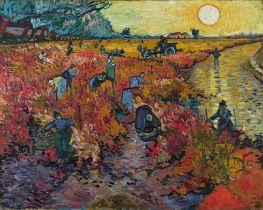
Red Vineyards at Arles 1888
Oil Painting
$859
$859
Canvas Print
$74.46
$74.46
SKU: VVG-1103
Vincent van Gogh
Original Size: 73 x 91 cm
Pushkin Museum of Fine Arts, Moscow, Russia
Vincent van Gogh
Original Size: 73 x 91 cm
Pushkin Museum of Fine Arts, Moscow, Russia
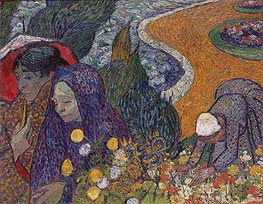
Memory of the Garden at Etten (Women of Arles) 1888
Oil Painting
$859
$859
Canvas Print
$72.10
$72.10
SKU: VVG-1104
Vincent van Gogh
Original Size: 73 x 92 cm
The State Hermitage Museum, St. Petersburg, Russia
Vincent van Gogh
Original Size: 73 x 92 cm
The State Hermitage Museum, St. Petersburg, Russia
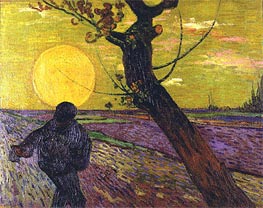
The Sower at Sunset 1888
Oil Painting
$848
$848
Canvas Print
$73.45
$73.45
SKU: VVG-1105
Vincent van Gogh
Original Size: 73.5 x 93 cm
E.G. Buehrle, Zurich, Switzerland
Vincent van Gogh
Original Size: 73.5 x 93 cm
E.G. Buehrle, Zurich, Switzerland
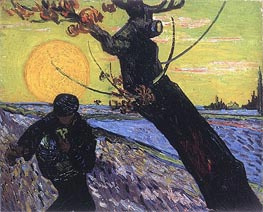
The Sower 1888
Oil Painting
$445
$445
Canvas Print
$61.41
$61.41
SKU: VVG-1106
Vincent van Gogh
Original Size: 32 x 40 cm
Van Gogh Museum, Amsterdam, Netherlands
Vincent van Gogh
Original Size: 32 x 40 cm
Van Gogh Museum, Amsterdam, Netherlands
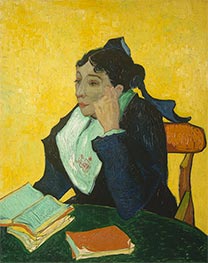
L'Arlesienne: Madame Joseph-Michel Ginoux c.1888/89
Oil Painting
$781
$781
Canvas Print
$73.79
$73.79
SKU: VVG-1107
Vincent van Gogh
Original Size: 91.4 x 73.7 cm
Metropolitan Museum of Art, New York, USA
Vincent van Gogh
Original Size: 91.4 x 73.7 cm
Metropolitan Museum of Art, New York, USA
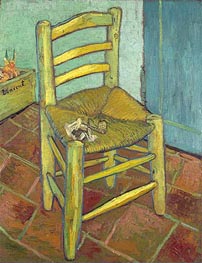
Vincent's Chair with His Pipe 1888
Oil Painting
$781
$781
Canvas Print
$72.44
$72.44
SKU: VVG-1108
Vincent van Gogh
Original Size: 91.8 x 73 cm
National Gallery, London, UK
Vincent van Gogh
Original Size: 91.8 x 73 cm
National Gallery, London, UK
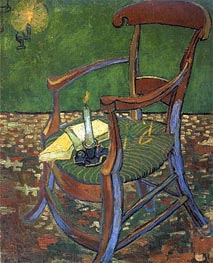
Paul Gauguin's Arm Chair 1888
Oil Painting
$781
$781
Canvas Print
$73.61
$73.61
SKU: VVG-1109
Vincent van Gogh
Original Size: 90.5 x 72.5 cm
Van Gogh Museum, Amsterdam, Netherlands
Vincent van Gogh
Original Size: 90.5 x 72.5 cm
Van Gogh Museum, Amsterdam, Netherlands
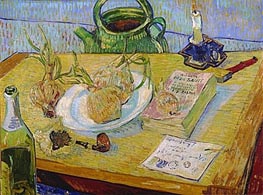
Still Life with a Plate of Onions 1889
Oil Painting
$714
$714
Canvas Print
$71.25
$71.25
SKU: VVG-1110
Vincent van Gogh
Original Size: 50 x 64 cm
Kroller-Mueller Museum, Otterlo, Netherlands
Vincent van Gogh
Original Size: 50 x 64 cm
Kroller-Mueller Museum, Otterlo, Netherlands
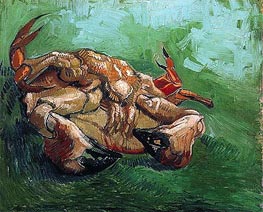
Crab on Its Back 1889
Oil Painting
$577
$577
Canvas Print
$61.41
$61.41
SKU: VVG-1111
Vincent van Gogh
Original Size: 38 x 46.5 cm
Van Gogh Museum, Amsterdam, Netherlands
Vincent van Gogh
Original Size: 38 x 46.5 cm
Van Gogh Museum, Amsterdam, Netherlands
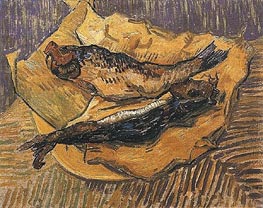
Still Life: Bloaters on a Piece of Yellow Paper 1889
Oil Painting
$634
$634
Canvas Print
$61.41
$61.41
SKU: VVG-1112
Vincent van Gogh
Original Size: 33 x 41 cm
Private Collection
Vincent van Gogh
Original Size: 33 x 41 cm
Private Collection
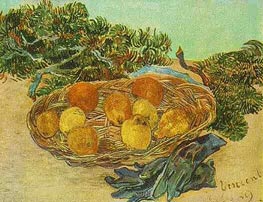
Still Life with Oranges, Lemons and Blue Gloves 1889
Oil Painting
$755
$755
Canvas Print
$71.59
$71.59
SKU: VVG-1113
Vincent van Gogh
Original Size: 48 x 62 cm
National Gallery of Art, Washington, USA
Vincent van Gogh
Original Size: 48 x 62 cm
National Gallery of Art, Washington, USA
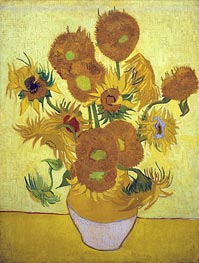
Still Life: Vase with Fourteen Sunflowers 1889
Oil Painting
$859
$859
Canvas Print
$70.40
$70.40
SKU: VVG-1114
Vincent van Gogh
Original Size: 95 x 73 cm
Van Gogh Museum, Amsterdam, Netherlands
Vincent van Gogh
Original Size: 95 x 73 cm
Van Gogh Museum, Amsterdam, Netherlands
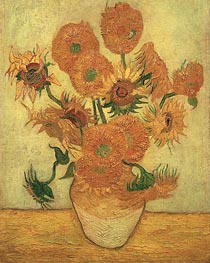
Still Life: Vase with Fourteen Sunflowers 1889
Oil Painting
$848
$848
Canvas Print
$91.22
$91.22
SKU: VVG-1115
Vincent van Gogh
Original Size: 100.5 x 76.5 cm
Yasuda Memorial Museum of Modern Art, Tokyo, Japan
Vincent van Gogh
Original Size: 100.5 x 76.5 cm
Yasuda Memorial Museum of Modern Art, Tokyo, Japan
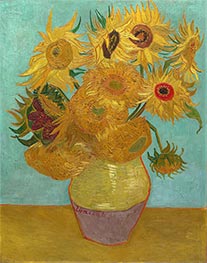
Still Life: Vase with Twelve Sunflowers c.1888/89
Oil Painting
$859
$859
Canvas Print
$73.11
$73.11
SKU: VVG-1116
Vincent van Gogh
Original Size: 92.4 x 71.1 cm
Philadelphia Museum of Art, Pennsylvania, USA
Vincent van Gogh
Original Size: 92.4 x 71.1 cm
Philadelphia Museum of Art, Pennsylvania, USA
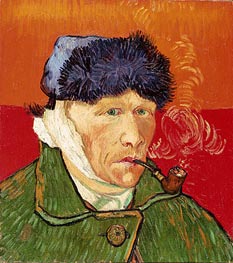
Self Portrait with Bandaged Ear and Pipe 1889
Oil Painting
$621
$621
Canvas Print
$70.62
$70.62
SKU: VVG-1117
Vincent van Gogh
Original Size: 51 x 45 cm
Private Collection
Vincent van Gogh
Original Size: 51 x 45 cm
Private Collection
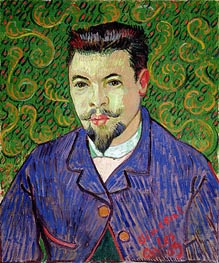
Portrait of Doctor Felix Rey 1889
Oil Painting
$741
$741
Canvas Print
$104.37
$104.37
SKU: VVG-1118
Vincent van Gogh
Original Size: 64 x 53 cm
Pushkin Museum of Fine Arts, Moscow, Russia
Vincent van Gogh
Original Size: 64 x 53 cm
Pushkin Museum of Fine Arts, Moscow, Russia
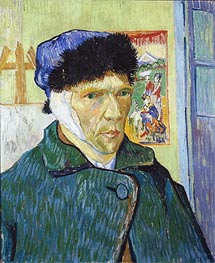
Self-Portrait with Bandaged Ear 1889
Oil Painting
$732
$732
Canvas Print
$93.08
$93.08
SKU: VVG-1119
Vincent van Gogh
Original Size: 60.5 x 50 cm
Courtauld Institute of Art, London, UK
Vincent van Gogh
Original Size: 60.5 x 50 cm
Courtauld Institute of Art, London, UK
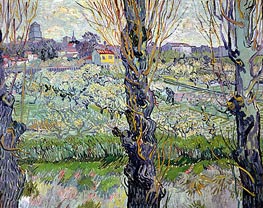
Orchard in Bloom with View of Arles 1889
Oil Painting
$866
$866
Canvas Print
$72.77
$72.77
SKU: VVG-1120
Vincent van Gogh
Original Size: 72 x 92 cm
Neue Pinakothek, Munich, Germany
Vincent van Gogh
Original Size: 72 x 92 cm
Neue Pinakothek, Munich, Germany
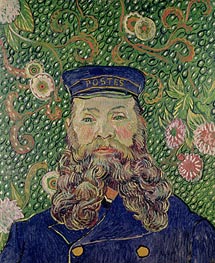
Portrait of the Postman Joseph Roulin 1889
Oil Painting
$826
$826
Canvas Print
$109.38
$109.38
SKU: VVG-1121
Vincent van Gogh
Original Size: 64.4 x 55.2 cm
Museum of Modern Art, New York, USA
Vincent van Gogh
Original Size: 64.4 x 55.2 cm
Museum of Modern Art, New York, USA
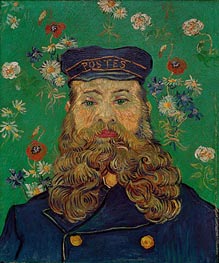
Portrait of the Postman Joseph Roulin 1889
Oil Painting
$666
$666
Canvas Print
$77.51
$77.51
SKU: VVG-1122
Vincent van Gogh
Original Size: 65 x 54 cm
Kroller-Mueller Museum, Otterlo, Netherlands
Vincent van Gogh
Original Size: 65 x 54 cm
Kroller-Mueller Museum, Otterlo, Netherlands
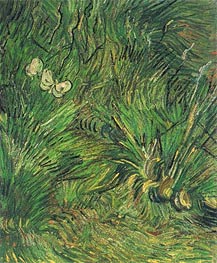
Two White Butterflies 1889
Oil Painting
$632
$632
Canvas Print
$61.41
$61.41
SKU: VVG-1123
Vincent van Gogh
Original Size: 55 x 45.5 cm
Van Gogh Museum, Amsterdam, Netherlands
Vincent van Gogh
Original Size: 55 x 45.5 cm
Van Gogh Museum, Amsterdam, Netherlands
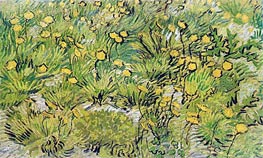
A Field of Yellow Flowers 1889
Oil Painting
$674
$674
Canvas Print
$61.41
$61.41
SKU: VVG-1124
Vincent van Gogh
Original Size: 34.5 x 53 cm
Kunstmuseum, Winterthur, Switzerland
Vincent van Gogh
Original Size: 34.5 x 53 cm
Kunstmuseum, Winterthur, Switzerland